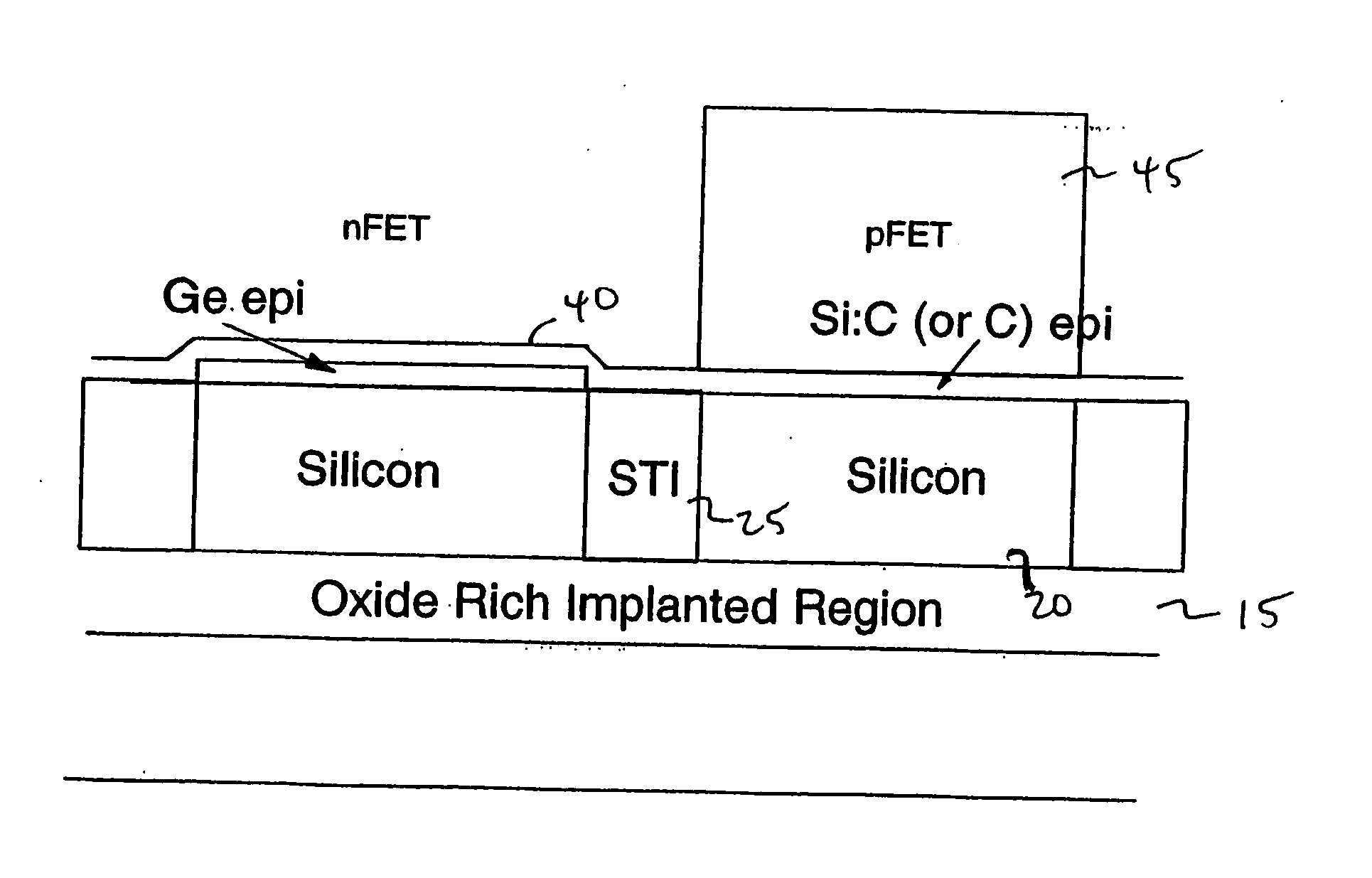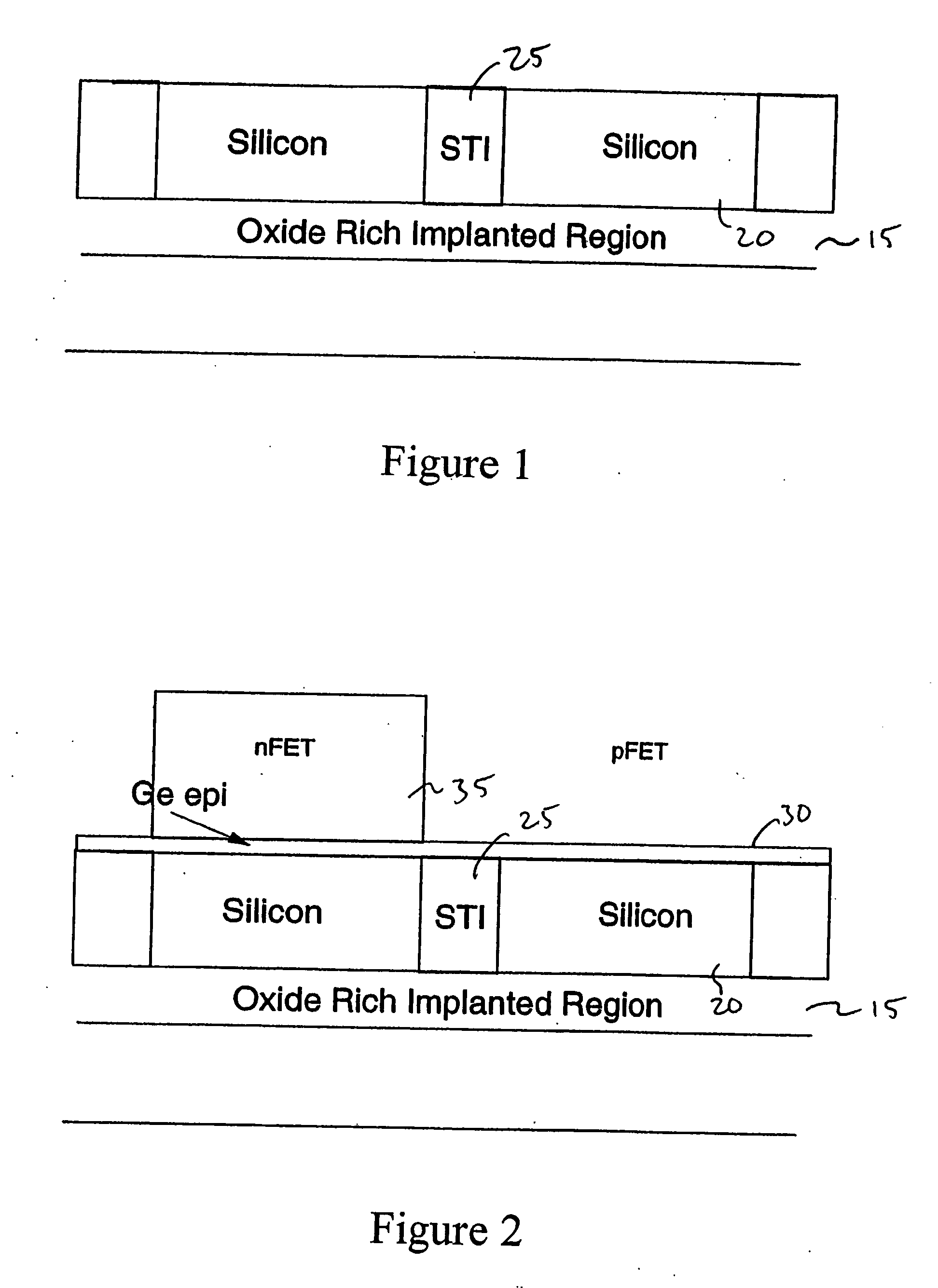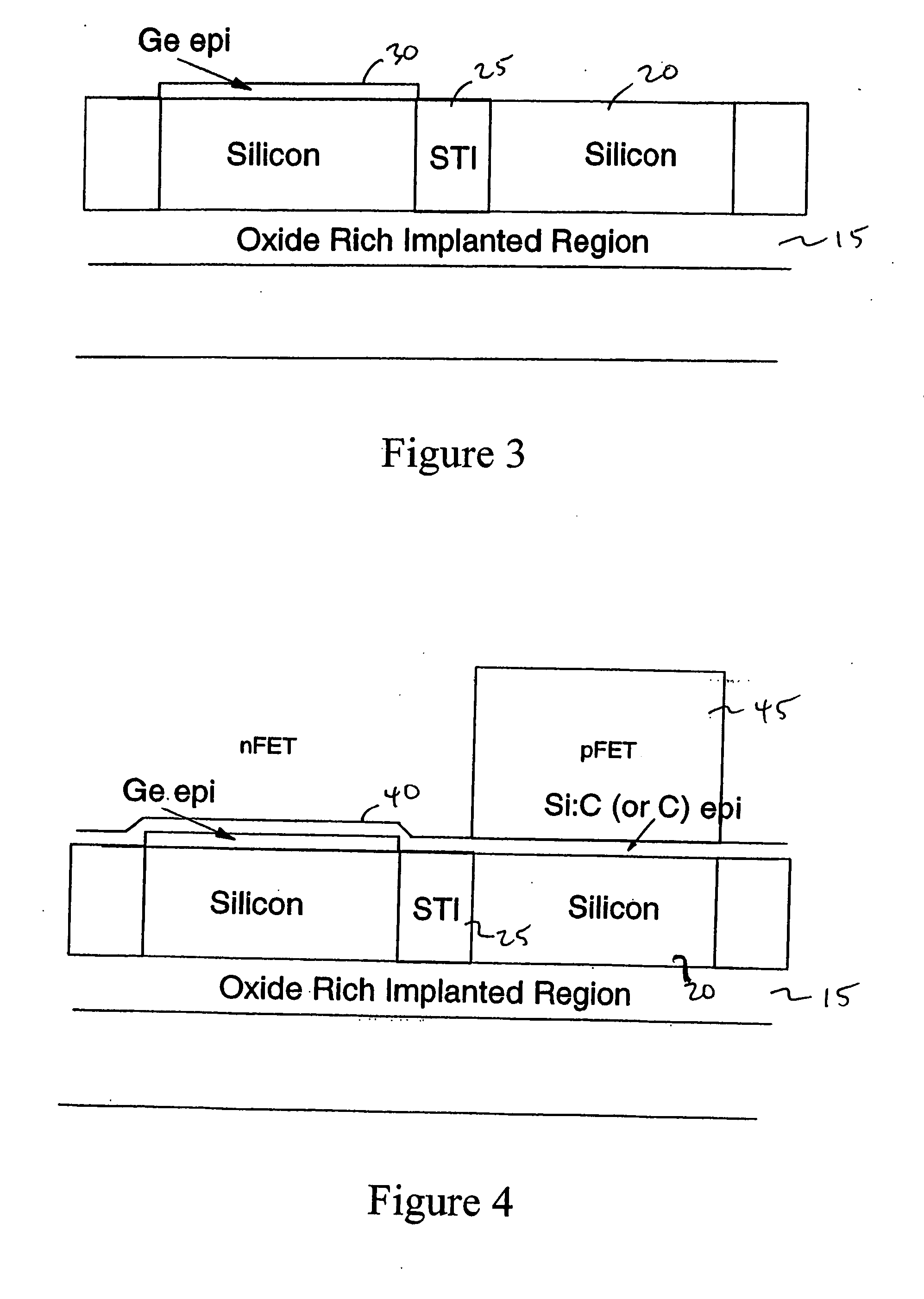Strained finFETs and method of manufacture
a technology of finfets and finfets, which is applied in the direction of semiconductor devices, electrical apparatus, transistors, etc., can solve the problems of difficult process implementation, difficult use of ge %, and general disadvantages of nfet performance over pfet performan
- Summary
- Abstract
- Description
- Claims
- Application Information
AI Technical Summary
Benefits of technology
Problems solved by technology
Method used
Image
Examples
Embodiment Construction
[0018] This invention is directed to a semiconductor device and method of manufacture which provides desired stresses associated with the nFET and the pFET of CMOS devices for improved device performance. In one approach, SiGe and Si:C islands are obtained in the respective nFET and pFET channels prior to the formation of finFETs. Thereafter a tensile film is formed on the islands. This tensile film, e.g., hard mask, provides a significant amount of lateral stiffness and holds the Si:C fin in place. That is, the tensile hard mask prevents the fin, which is under a highly compressive stress, from buckling, laterally, due in part to asymmetries in the fin expected to form during processing. An epitaxial Si layer is then formed on both relaxed NFET and pFET fins to provide the desired stress conditions of the NFET and the pFET.
[0019] A finFET is a double-gate structure, where the silicon body has been turned on its side to form a “fin” of silicon standing perpendicular to the wafer pl...
PUM
 Login to View More
Login to View More Abstract
Description
Claims
Application Information
 Login to View More
Login to View More - R&D
- Intellectual Property
- Life Sciences
- Materials
- Tech Scout
- Unparalleled Data Quality
- Higher Quality Content
- 60% Fewer Hallucinations
Browse by: Latest US Patents, China's latest patents, Technical Efficacy Thesaurus, Application Domain, Technology Topic, Popular Technical Reports.
© 2025 PatSnap. All rights reserved.Legal|Privacy policy|Modern Slavery Act Transparency Statement|Sitemap|About US| Contact US: help@patsnap.com



